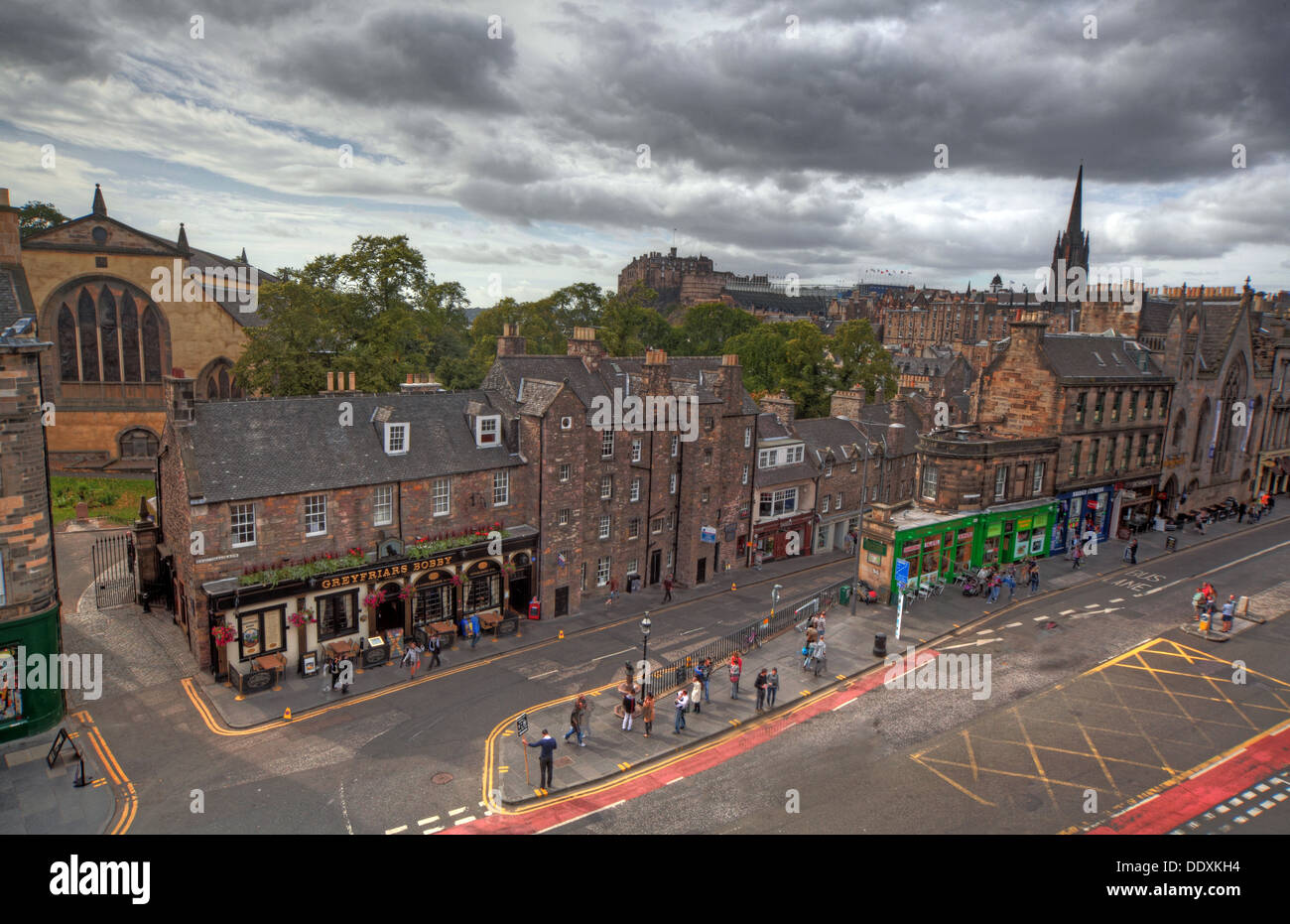Edinburghs Grey Friars, Tolbooth, George Street and Candlemaker Row, city centre, Lothians, Scotland, UK, under moody skies

Image details
Contributor:
Tony Smith / Alamy Stock PhotoImage ID:
DDXKH4File size:
58.2 MB (2.7 MB Compressed download)Releases:
Model - no | Property - noDo I need a release?Dimensions:
5607 x 3628 px | 47.5 x 30.7 cm | 18.7 x 12.1 inches | 300dpiDate taken:
31 August 2013Location:
Grayfriars, Candlemaker Row, Edinburgh Old Town, Lothians, Scotland, UK, EH1 2QEMore information:
Greyfriars Greyfriars Kirkyard is the graveyard surrounding Greyfriars Kirk in Edinburgh, Scotland. It is located at the southern edge of the Old Town, adjacent to George Heriot's School. Burials have been taking place since the late 16th century, and a number of notable Edinburgh residents are interred at Greyfriars. The Kirkyard is operated by City of Edinburgh Council in liaison with a charitable trust, which is linked to but separate from the church. The Kirkyard and its monuments are protected as a category A listed building. History Greyfriars takes its name from the Franciscan friary on the site (the friars of which wear grey habits), which was dissolved in 1560. The churchyard was founded in August 1562 after Royal sanction was granted to replace the churchyard at St Giles' Cathedral in Edinburgh. The latter burial ground was not used after around 1600 By 1565, all the buildings of the Friary had been removed and their stones carried away for use in the construction of the New Tolbooth and to repair St Giles' and its kirkyard walls. The kirkyard of St Giles' was, by then, overcrowded and Mary, Queen of Scots had, in 1562, given the grounds of the Friary to the town council to use as a burial ground Greyfriars Bobby (4 May 1855 – 14 January 1872) was a Skye Terrier or Dandie Dinmont Terrier who became known in 19th-century Edinburgh for spending 14 years guarding the grave of his owner until he died on 14 January 1872. The story continues to be well known in Scotland, through several books and films. A prominent commemorative statue and nearby graves are a tourist attraction.